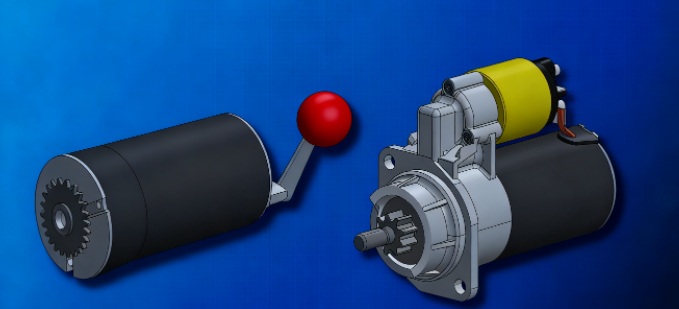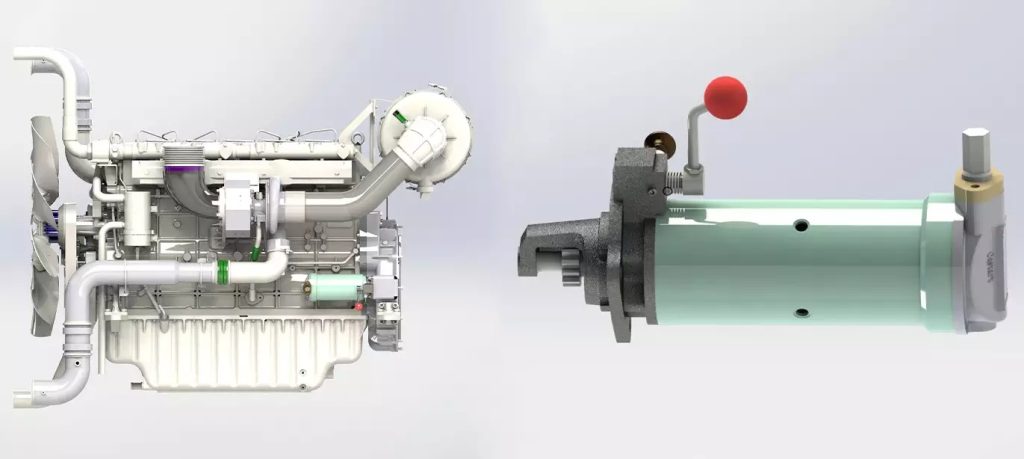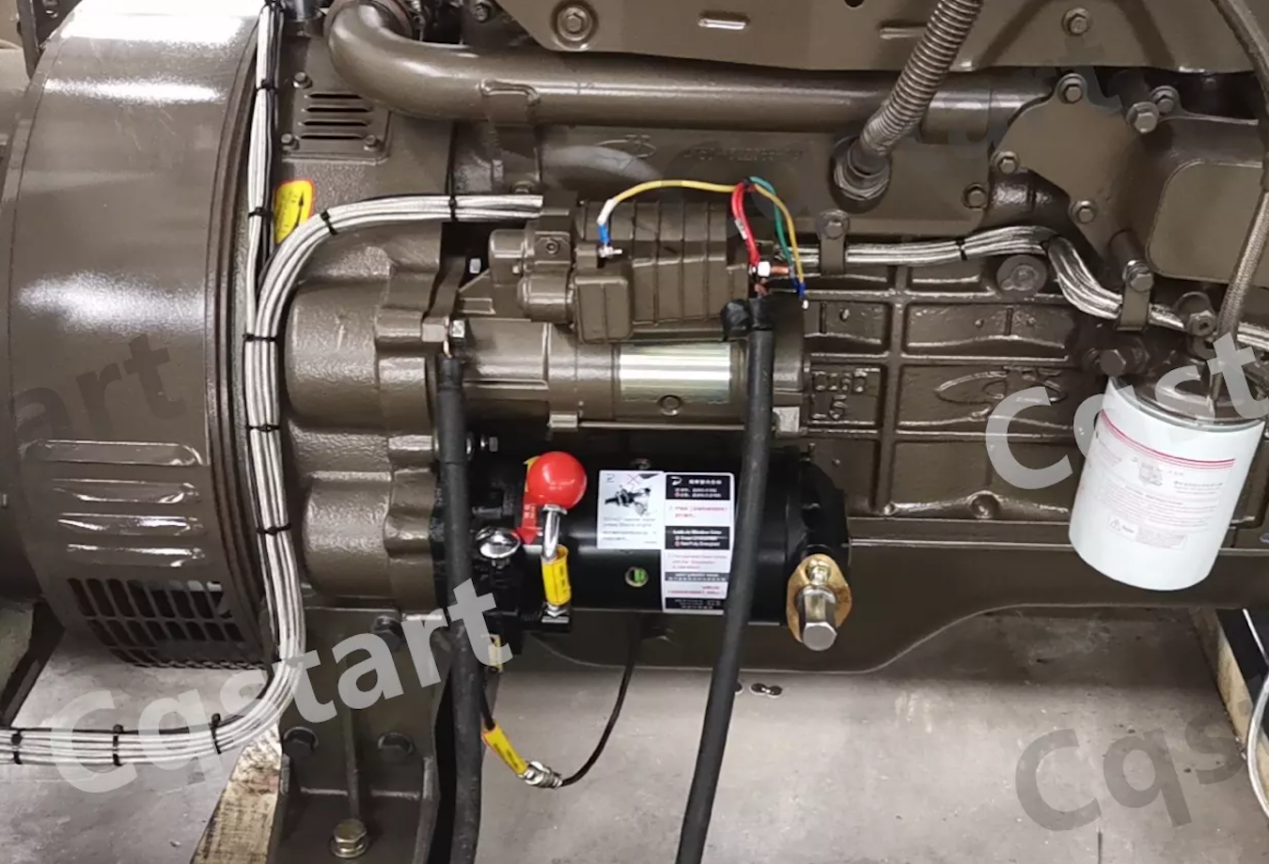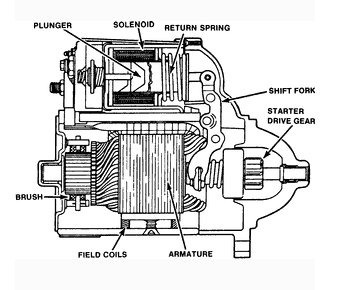In emergency scenarios like power outages and natural disasters, emergency generators are core equipment for ensuring power supply, and starters are the “first checkpoint” determining whether generators can respond quickly. As common options, spring starters and electric starters are characterized by substantial differences. Many users face decision dilemmas when purchasing or replacing starters, often due to insufficient understanding of their applicable scenarios, reliability, and maintenance costs.
This article will compare and analyze the working principles, advantages, disadvantages, and application situations of the two starters based on the core needs of emergency scenarios, helping users scientifically select the most suitable starting solution.
Part 1. Core Difference Between Spring Starters and Electric Starters
As common choices, spring starters and electric starters differ in a significant way. This table outlines their key features to highlight the key differences:
| Comparison Dimension | Spring Starter | Electric Starter |
| Power Source | The energy stored is stored in a high-strength primary spring (manual or electric storage of energy) | Battery power source |
| Starting Process | Spring energy is released to drive crankshaft rotation using gear sets | The battery is the power source for the starter motor, that then turns the crankshaft. |
| Dependent Components | Main spring and gear sets (no electronic component) | Battery, starter motor, circuit system |
These differences are the base for their performance in the real world. For example, spring starters that do not have electronic components, are less prone to damage by dust or moisture. On the other hand electric starters are dependent on batteries. If a battery is not maintained properly they’re more susceptible to fail due to depletion of power. Knowing these basic principles can help users to determine which one is best suited to their power backup requirements.

Part 2. Advantage and Disadvantage of Spring and Electric Starters
When deciding between electric or spring starters to start emergency generators, knowing the distinct advantages and drawbacks is crucial to making an informed choice. Each one is built with distinctive characteristics that work best for different situations. Taking a look at these characteristics helps determine which one is best suited to the specific requirements.
Advantages and Disadvantages of Spring Starters
The spring starters stand out by their independence from power sources external to them. They’re not powered by batteries, which allows for manual energy storage to start up regardless of whether batteries fail or circuits fail. This makes them suitable for scenarios where “power-free startup” is critical.
The design is simple and reliable, with fewer components and no complex circuitry. This design lowers the risk of failure, and allows maintenance to be simple, even after prolonged periods of inactivity. Regular inspections concentrate specifically on the elasticity of a spring and the lubrication of gears, making the expense of repairs low.
Environmental Adaptability is another major quality. With aluminium enclosures, the batteries can withstand water, dust and corrosion. They operate with stability over a wide temperature range, ranging from -30℃ to 50℃ and are not affected by temperature-related performance declines that plague batteries.
Despite the benefits, however, spring starters come with some limitations. Certain spring starters require manual turning of the handle for energy storage, which requires physical exertion from the operator. In addition, they have to contend with emergency generators that are ultra-powerful, like megawatt-class units. They typically require custom high-torque springs that increase costs.

Advantages and Disadvantages of Electric Starters
Electric starters excel in their ease of use. With one-button start-up functions, they remove the requirement for manual force, which makes them ideal for use on a regular basis or by those who don’t have any special training.
They also provide advanced integration with systems that run high power. The technology for electric starters has been developed and allows them to seamlessly match generators of different power levels without needing modification.
However, their dependence on batteries is a major disadvantage. Inactivity for long periods can result in battery-related problems which require frequent maintenance and charging that can add to the overall costs of managing.
Environmental adaptability is a weakness. Temperatures that are too low can drastically decrease battery capacity, and humid conditions could easily cause electrical circuit malfunctions, making electric starters unsuitable for extreme environments.
Maintenance is more complicated when compared to spring starters. Motors, circuits, and even batteries require periodic inspections and troubleshooting is more difficult because of how interconnected they are parts.
Part 3. Adaptation Guide for Emergency Scenarios
The choice between spring starters and electric starters isn’t simply about the features they offer, but rather about the strengths of each to meet your particular emergency requirements. The most appropriate choice is contingent on the location, frequency of usage and the maintenance capabilities. Here is a specialized guide that will help you determine the most secure option.
Selection Based on Scenario Needs
The choice of the best starter is dependent greatly on the particular environment and the usage requirements. Below is a table that provides suggestions specific to the most common emergency situations:
| Scenario Type | Recommended Starter | Core Reason |
| Remote Areas/No Grid Support | Spring Starter | Does not rely on batteries, which can cause problems caused by the inability to recharge batteries because of grid failures. |
| Low-Temperature/High-Humidity/Coastal Environments | Spring Starter | Resistant to low temperatures and corrosion and low temperatures, ensuring consistent performance regardless of the harsh conditions in the environment. |
| Hospitals/Data Centers | Spring Starter | Allows manual startup in emergency situations, while ensuring an continuous power supply. |
| Urban Home Emergency/Frequent Start-Stop | Electric Starter | Easy to operate, and suitable for people who are not professionals, and has simpler regular maintenance. |

Selection Based on Maintenance Cost and Frequency
Maintenance requirements are a major factor in the long-term usability of the product:
Spring starters require little maintenance, requiring only periodic checks of spring elasticity and grease for the gear. They don’t require any consumable expenses (no batteries to replace) and result in less long-term costs.
Electric starters require more regular maintenance, including periodic battery voltage checks as well as battery changes every two to three years. These costs, as well as the ongoing maintenance are ideal for those with regularly scheduled maintenance.
FAQs
Q1:Does the spring starter compatible with all levels of power in emergency generators?
A1: No.It is not suitable for all power levels, and it needs to be matched with its displacement (a important factor in relation to power) and the installation requirements. Cqstart provides a variety of spring starters with various displacements:
Standard models such as those of the 7 Series (under 2L), 5 Series (1-4L), 1 Series (4-7L), 2 Series (7-10L), 4 Series (10-13L), 3 Series (13-16L) , 6 Series (16-30L) along with W Series (1-30L) can directly accommodate smaller to mid-sized generators that are corresponding with these ranges of displacement.
Q2: How do I prolong the life span of the electric starters used on emergency generators?
A2: Disconnect the battery connectors prior to long-term storage in order to avoid self-discharge. Charge the battery each 3 months. Do not start frequently in cold temperatures and preheat the engine prior to getting started.
Q3: In the event of an emergency, when the spring starter is unable to drive the engine following an energy storage manual, What to do?
A3: Check to see if your gears are jammed (applying grease can help). If the engine is still unable to begin, this could be caused by an issue with the mechanics (e.g. the damaged the cylinders). Lubricate the cylinders as per maintenance instructions for your engine prior to trying to restart the engine.
Summary
When it comes to choosing emergencies generators starters, spring starters – with advantages like no dependence on power and a high degree of environmental adaptability and low maintenance costs-are ideal for remote regions with harsh conditions, and high-reliability situations like healthcare facilities and data centers. Electric starters, favored for their ease of operation, are ideal for urban homes, frequently stopping and starting requirements, and those with routine maintenance abilities. Pick based on your environment and your maintenance capabilities and needs for emergencies to ensure a steady start-up when required.


